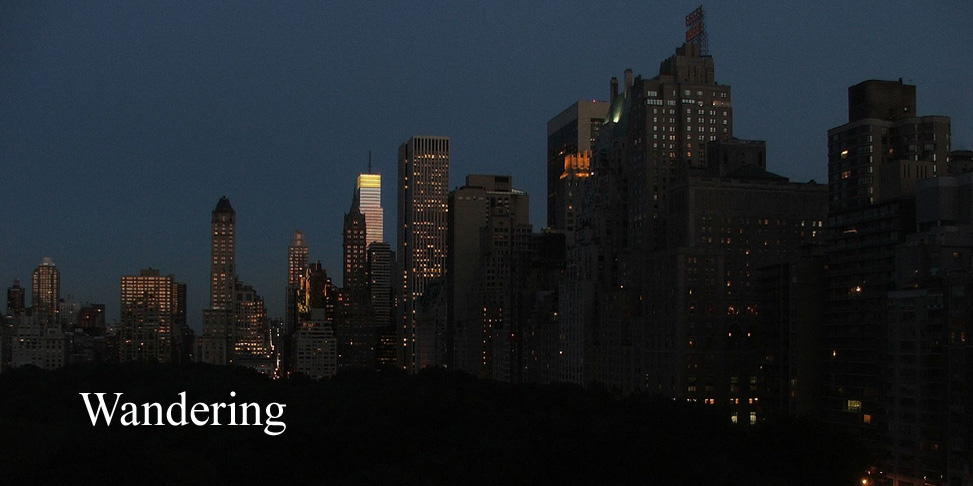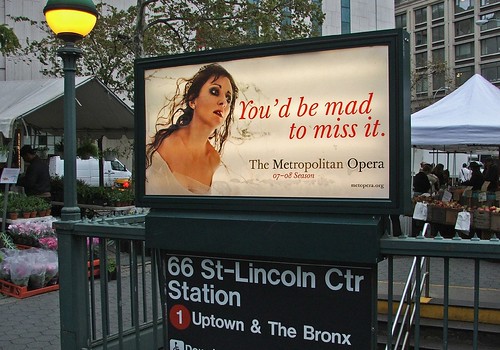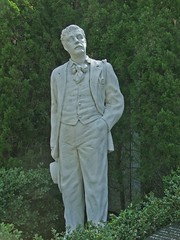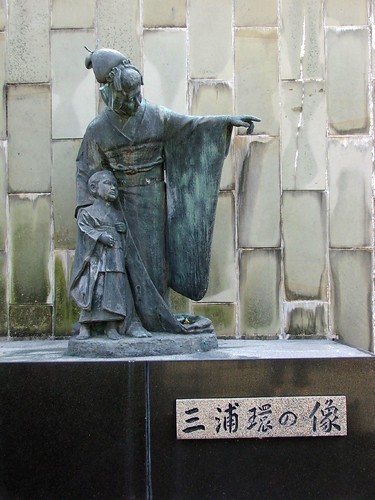
Tamaki Miura as Butterfly: statue Glover Gardens Nagasaki
At one time I disliked Madam Butterfly which I saw as a travesty of Japanese life. However, it as mistaken to approach the opera in this way as it is to think of Puccini’s other exotic locations as part of the real world. There is nothing wrong with fantasy Japan. It’s popular even in Japan, as I saw in April where the Glover Garden in Nagasaki has statues and exhibits devoted to Madam Butterfly and Puccini. In one house a TV screened endless loops of a local concert performance; and hearing Pinkerton sing Addio, fiorito asil in a house overlooking Nagasaki harbour was a moving end to any last remnants of dislike.
http://en.wikipedia.org/wiki/Madam_Butterfly
The Met has brought back the production which opened last year’s season. I was lucky to see it then and to walk down to Times Square on opening night to watch the innovation of opera on the big screen.
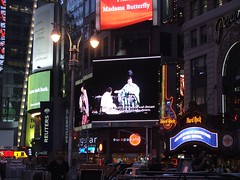
Last year’s Butterfly was Christina Gallarda-Domas. I remembered more her vulnerable appearance in the role than her singing until I played the CD of Sour Angelica, in which she sings the title role. On hearing it the unique quality of her voice came back from memory. She is ideally suited to both roles.
http://en.wikipedia.org/wiki/Cristina_Gallardo-Dom%C3%A2s
This year’s Butterfly is Patricia Racette who is a fine soprano and a good partner for Roberto Alagna as Pinkerton. The New York Times thought that “Mr. Alagna is free (to put it kindly) in matters of rhythm and note values.” I am not qualified to judge this, but if so, who cares. The Times gets to hear more real tenors that I do and I am satisfied with a bit of volume, clarity and emotional response. Addio, fiorito asil was marvelous.
Suzuki was sung, as last year, by Maria Zifchak, who brought great intensity of feeling to her key moments.
Sharpless was sung by Luca Salsi who was making his Met debut. He has a strong hard edged baritone voice, but I thought something was missing in his portrayal of the American consul. Sharpless is a kind of mediator of the audience’s response: at the beginning, worried at the potential outcome and later horrified when it arrives to a blast of Puccini emotion in the form of Butterfly’s child. Mr. Salsi didn’t seem to respond much at any time. A strong voice is no substitute for some acting. John Pringle might have overdone it a fraction, but I can still see the expression of horror on his face when I hear the ironic fanfare and the child appears.
The production is abstract but realistic as it uses various moving Japanese screens to build and dissolve various rooms in the house. At the beginning of Act II, Butterfly is seen serving tea to Pinkerton who is seated in a Western style chair. A screen gliding across the stage obscures him from view and as it moves the space is visible again but Pinkerton and the chair have vanished.
An unusual feature of this production is the representation of Butterfly’s child by a puppet manipulated by three members of the Blind Summit Theatre dressed all in black. A couple of non singing servants in Act I are also puppets. This arrangement works quite well and allows more acting by the child than would normally be the case, though a few fewer significant glances would probably be welcome on repeated viewings.
I have been reading Puccini without Excuses by William Berger who takes an uncompromising view of Pinkerton’s character. He sees him as motivated by lust alone and says the music of the love duet supports this view. This is wrong. Pinkerton is living in a fantasy world, and while sex might be part of it, the music speaks of the romantic fantasy in which he is enveloped. I’m glad the producer agrees with this and surrounds the love duet with swirling lanterns on an otherwise black stage.
The conductor was Mark Elder. I hope I am not reading too much into his interpretation of the score by saying the opening of Act I was more gritty than usual and conveyed a real sense of foreboding.
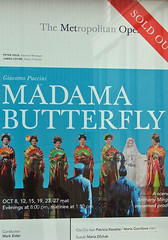
Madama Butterfly
Metropolitan Opera New York
27 October 2007 (Matinee)
